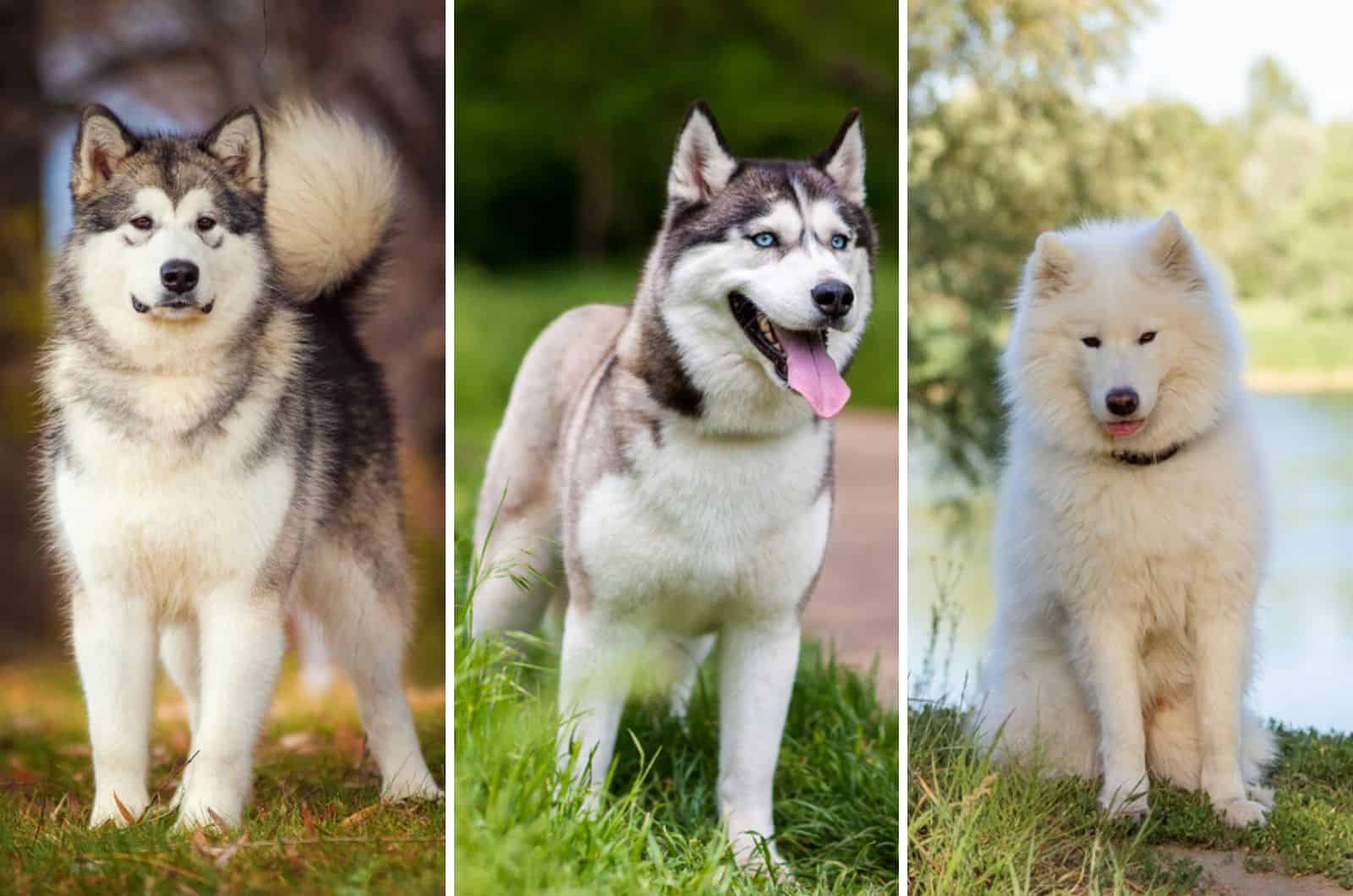They are all beautiful sled dogs that love to howl. A lot of people mix them up, especially Siberian Huskies and Alaskan Malamutes. But, there are differences between these dogs, not only in physical characteristics, but in temperamental traits, too.
Also, one of them is much more expensive than the rest. They might come from harsh and cold climates, but their fur has different coat colors and different lengths.
However, how do you choose the right one?
Well, we are here to help you make that choice. It is the Alaskan Malamute vs Husky vs Samoyed chart explained in detail.
From barking and drooling to their life expectancy, height, weight, and many more, these arctic pooches have their own personalities, exercise needs, and different social and family life traits.
Depending on what you like, you can decide if the Samoyed dog, the Alaskan Malamute, or the Siberian Husky is the best dog for you and your family.
Just remember — they all thrive in colder climates and in a lot of space where they can be themselves.
Malamute Vs Husky Vs Samoyed
First things first, let’s make the statement that all three dog breeds are accepted by the American Kennel Club (AKC), and that they all go under the ‘working dogs’ group.
They all originated from Asia a long time ago, and crossed the Bering Strait with nomadic people in order to come to North America, looking for a better place to live.
They have all been used as hunting dogs, sled dogs, and companion dogs by the nomadic people of Siberia, and later, by nomadic people of the arctic circle of North America.
These dogs were also guard dogs for these people, and they were providers of warmth during cold Arctic nights. People would huddle up in their tent with their dogs to keep warm.
One more thing — all three dogs are medium-sized to big dogs, they are all purebred, and they are all adapted to cold weather with their thick, double coat and undercoat.
That being said, let’s take a look at the general physical traits and price of these dogs in the Malamute vs Husky vs Samoyed chart…
[table id=714 /]
We will talk in more detail about the physical differences between these three dogs, but you can already see that they are of similar height and weight. The Alaskan Malamute vs Samoyed vs Husky chart (number one) is an overview of their size and price.
The next chart shows their family life and adaptability, along with their social and temperamental traits.
[table id=715 /]
Physical Appearance
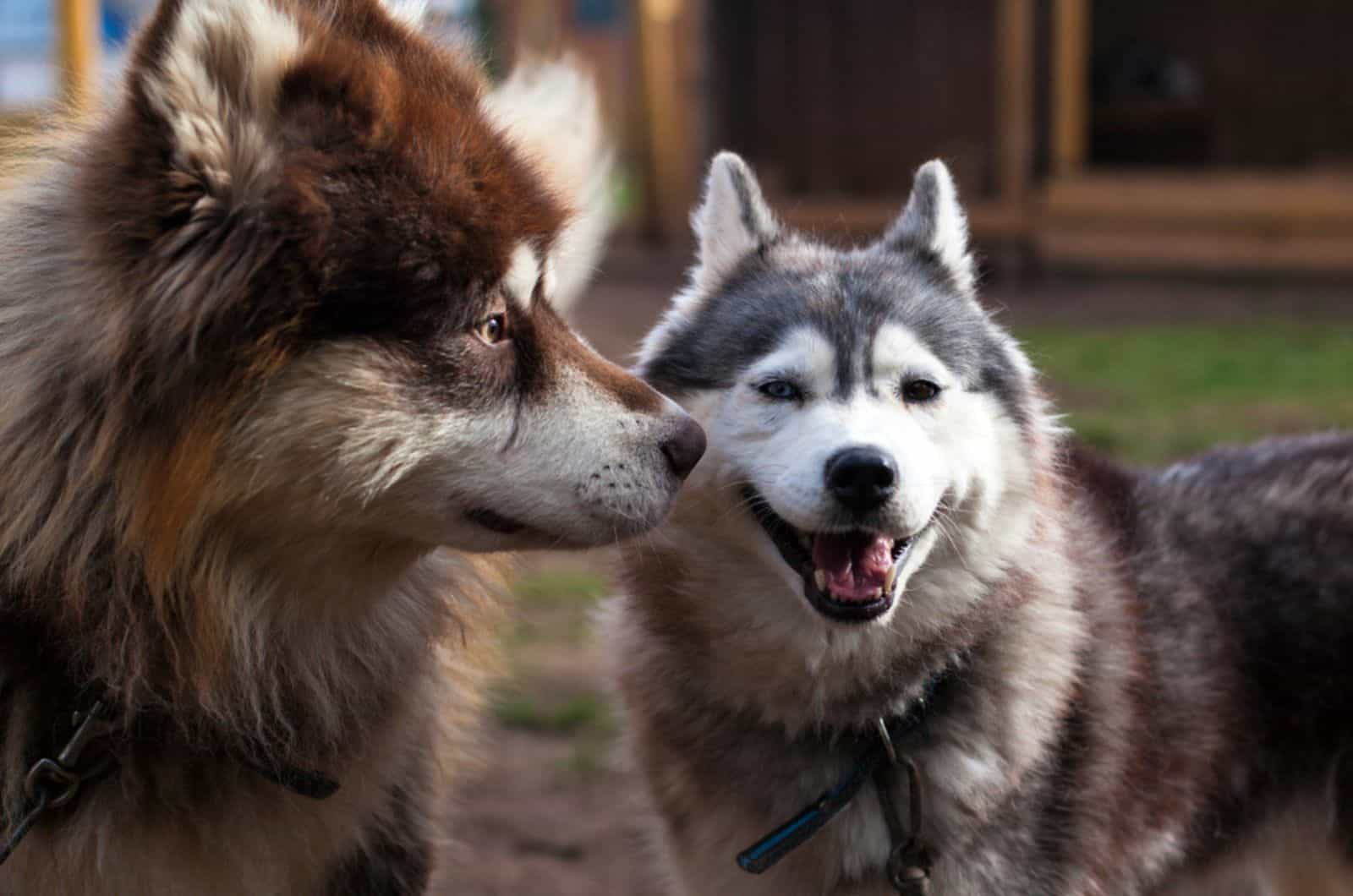
The Malamute vs Husky vs Samoyed chart shows us that all three dogs have a double coat. They are medium to large dogs, and they are all spitz-type dogs.
A spitz-type dog means that a dog has thick fur, usually white, pointy ears, and a long, pointed muzzle. There are differences from one dog to another, but they all share these physical traits, from the German Spitz to the Japanese Akitas.
Generally speaking, the Alaskan Malamute is larger than Husky and Samoyed dogs, but the difference is not drastic. Also, all three breeds have smaller female than male dogs.
One very important trait is that the Samoyed is hypoallergenic, while the other two are not. That’s definitely something to take into consideration if you are deciding between these three dog breeds.
Samoyed
Sammy dogs are double-coated and long-coated dogs. They are most recognizable for their snow-white coat color, but there are three more coat color variations accepted by the AKC.
There are also black Samoyeds, but these dogs are not purebred but designer dogs — a product of crossbreeding two purebred dogs… in this case, a purebred Samoyed and some other black-colored dog breed.
A very important fact for all allergy sufferers is that these dogs are hypoallergenic. Even though they do shed, they don’t produce too much dander, which is the main reason behind allergic reactions in people.
So, they will need weekly grooming to remove the hair and prevent tangles, but at least you can do this without constant sneezing and red eyes.
As for their weight, female Samoyeds are smaller than males, and they usually weigh from 35 to 50 pounds, while male dogs weigh from 45 to 65 pounds.
It’s the same with their height — females are smaller, and usually up to 21 inches tall, and males are taller, with the usual height of 23.5 inches.
Siberian Husky
The Siberian Husky also has a double coat, but it has medium-length fur. This dog looks smaller than the Samoyed dog because they have the least fluffy fur of all three. But, they can be just as big as Samoyeds.
Male Huskies weigh from 45 to 60 pounds, and females, from 35 to 50 pounds. The male Huskies are also taller — their height is up to 23.5 inches, while the female Huskies are up to 22 inches tall.
This dog is very popular, and there are many Siberian Husky crossbreeds. One of the most popular crossbreeds that look a lot like Huskies is the so-called Alaskan Husky.
As the name says, this crossbreed was originally bred in Alaska, so the confusion is even greater considering that Siberian Huskies are dominantly used in Alaska as sled dogs.
But, our Siberian Husky is a purebred dog with a long history starting in cold Siberia. They come in many coat color variations, but the most famous are black and white, sable and white, red and white, and gray and white.
If we are to talk about the most unique and beautiful coat color variations, we have to mention the Agouti Husky and the white-colored Husky.
Also, they have striking blue eyes — another trait of this beautiful dog breed.
Unfortunately, a trait that is not that desirable is the fact that the Siberian Husky is not hypoallergenic. They shed quite a lot, and they can cause an allergic reaction. Their double coat needs weekly grooming to keep it clean, healthy, and beautiful.
Malamute
Just like the Siberian Husky, the Alaskan Malamute also has a double and medium-length coat. Mals are actually often confused for Huskies. Besides their size, the most distinguishable trait is their tail.
A Malamute has a tail that curls over its back, and Huskies have a low-set, bushy tail similar to German Shepherds. But, because of their thick coat and unique markings on their face, people often confuse these two dogs.
The Alaskan Malamute can also have the agouti coat color variation. But, their most common coat colors are black and white, gray and white, and red and white.
When we take a look at the Malamute vs Husky vs Samoyed chart, we can see that the Malamutes are the biggest of the three. Male Malamutes usually weigh around 85 pounds, and females, around 75 pounds.
The usual height of male Malamutes is about 25 inches, and the usual height of female Malamutes is around 23 inches.
Alaskan Malamutes are not hypoallergenic. They shed less than the other two breeds, but they still need weekly grooming to keep the hair away and the fur healthy-looking.
Personality Traits
Looking at the Malamute vs Husky vs Samoyed second chart, we get the general feeling that Malamutes are less friendly and affectionate than the other two dog breeds.
It seems as if Malamutes need proper early socialization more than Huskies and Samoyeds. Socialization is needed for their relationship with young children, strangers, and other dogs. But, because of their aloofness, Malamutes make great watchdogs.
All of these traits are usual traits of these three dog breeds. But, every dog is unique, and they have their own personalities. Some Huskies might be more reserved with strangers, even though they are generally friendly.
It’s like saying that a Golden Retriever has to be a friendly dog, and that an Australian Shepherd has to have a high trainability trait. Dog owners will tell you that no matter how purebred a dog is, and no matter the esteemed bloodline they come from, they can show their unique and surprising traits.
So, when it comes to personality traits, let’s put it this way: 99% of these traits are the precise representation of Huskies, Samoyeds, and Malamutes. But… there is that 1% that is very important that can show different traits.
Samoyed
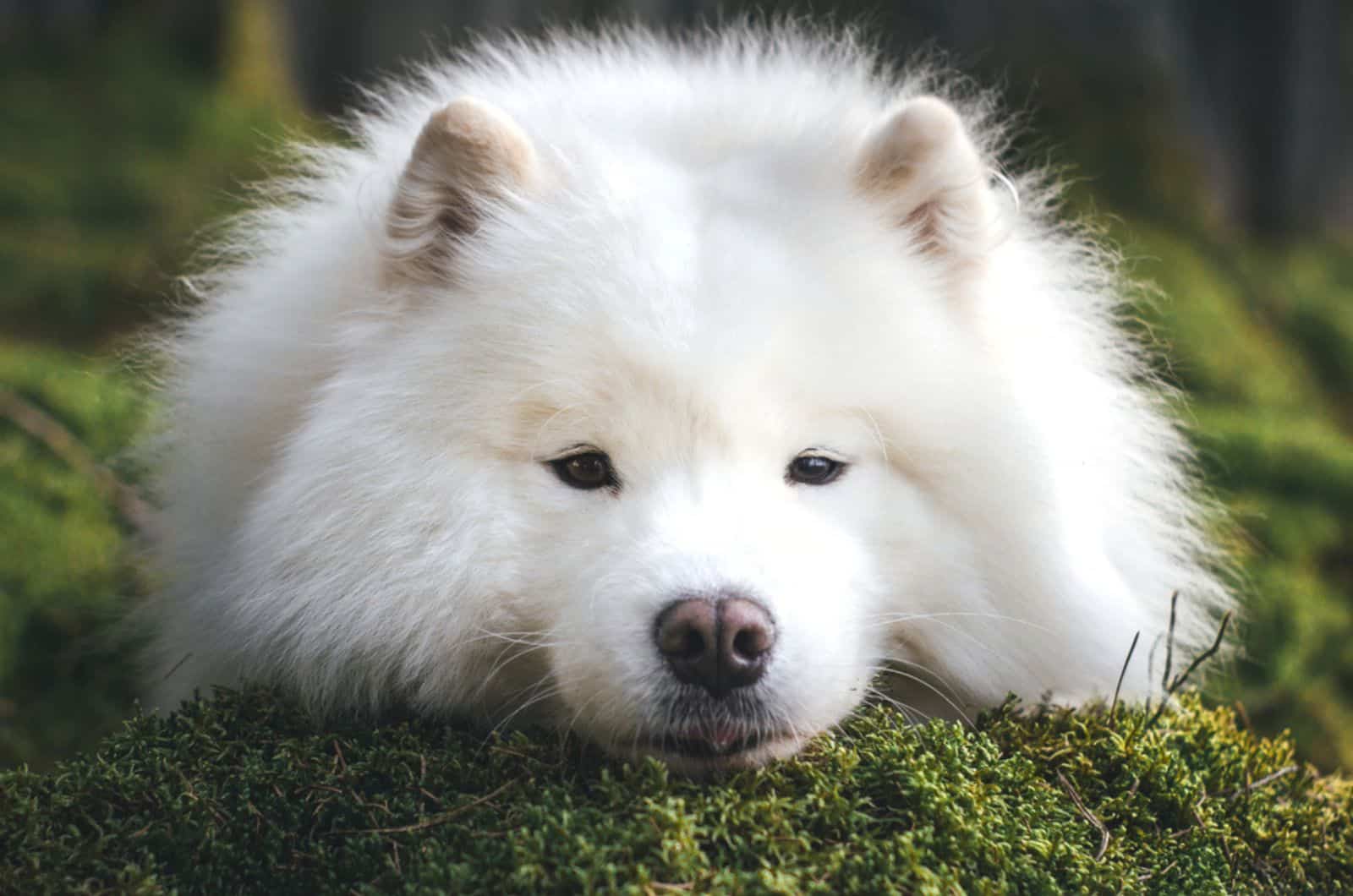
Sammies are perfect family dogs. They are highly affectionate, and they go excellent with children of all ages. Such affection and devotion to their human family certainly have something to do with their origins.
They used to keep their owners warm at night during cold (very cold) Arctic nights. Some of these nights had a temperature of -76F (-60C). People depended on their dogs and the dogs depended on their humans; hence, the uniquely strong bond that has been made a long time ago.
However, Samoyeds are not that good with other dogs. They are not as reserved as some other dog breeds, but they still need a proper teaching lesson to make them understand that other dogs are family members, too.
Samoyeds are playful dogs that love playtime and spending time with their owner somewhere outside. They are versatile dogs that can do more than pull sleds — they are good at herding, mushing, tracking, etc.
If you want a new family pet that has a high playfulness level — then the Samoyed is an excellent choice! But, you have to know that these dogs do their best and show their best when they have enough space to run and play.
Training a Samoyed dog
These dogs are quite easy to train. This trait comes from the fact that they love their human family so much that they want to do whatever is needed to please their owner.
However, sometimes a smart Sammie doggo can become too stubborn. This usually happens when you don’t give them enough mental and physical stimulation. In other words, if your dog gets bored too often — it will not listen to you very much. It wants to play and do what’s fun!
So, if you want to make your Samoyed dog’s training a piece of cake, then give them something to do and keep them occupied. You can use playful forms of training to make it even more interesting. Also, don’t forget to use a lot of positive reinforcement.
Can They Be Watchdogs?
Samoyeds were used by nomadic people of the Arctic circle for a long time, and for many things. One of those things was protection against wild animals. That’s where the protectiveness in Samoyed dogs comes from.
They are great watchdogs, and they can also be trained to be good guard dogs, although, their playfulness can often come in the way of guarding. But, because they are very vocal — don’t worry. Nothing can pass these dogs without them alarming you through their barking and howls.
Siberian Husky
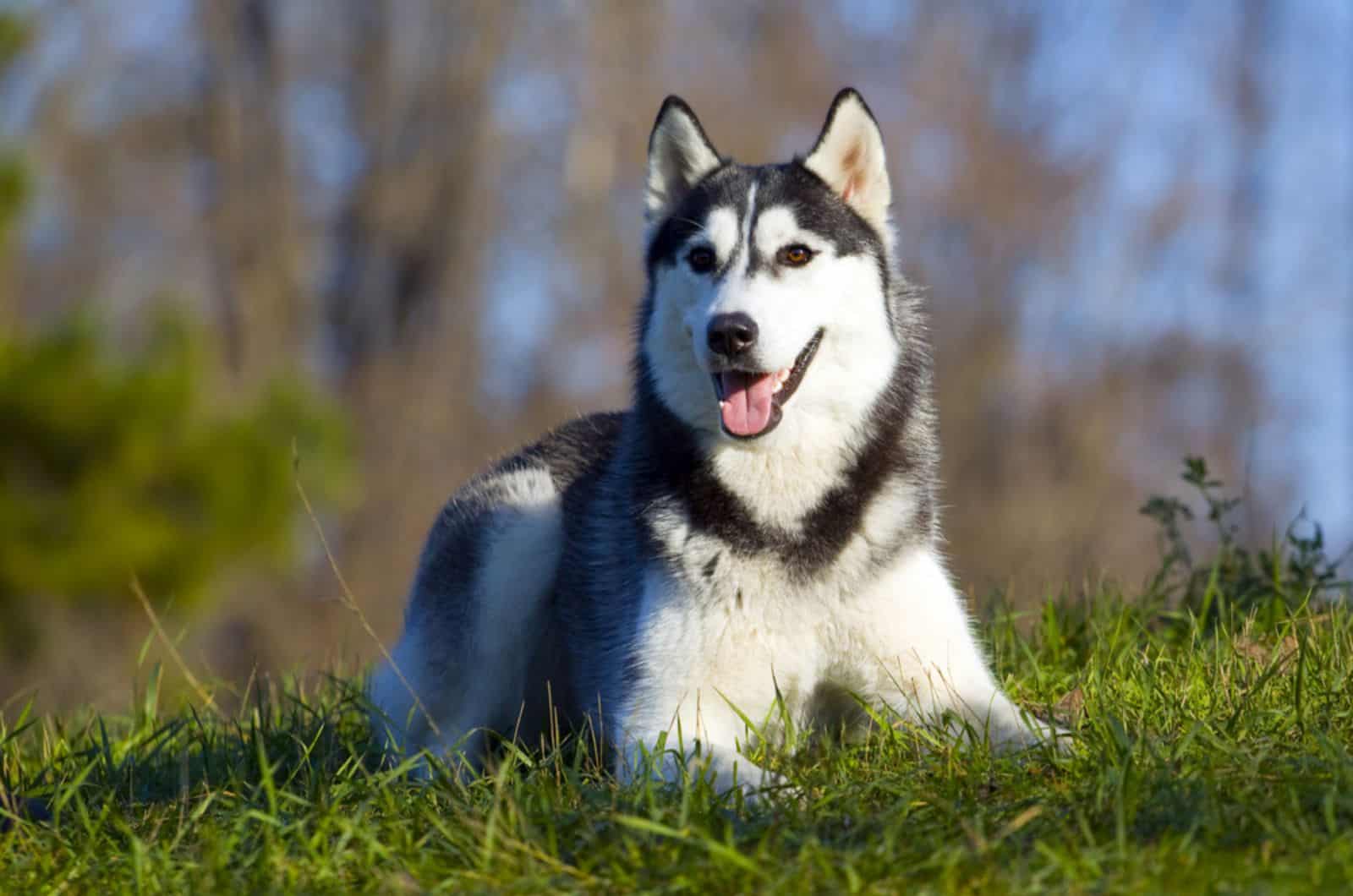
Huskies are also great family pets. They are very affectionate and open to anyone, not just their owner and the owner’s family.
Huskies are also great with children and other dogs. Siberian Huskies are pack animals, and as such, they are used to living with other dogs and getting along well with them. But, as in any pack or group of animals — there will always be an alpha male or female.
Siberian Huskies are also very playful. They can get so playful that they turn into mischievous pooches. If you want to teach a Husky something when it is in its play mode… good luck! They’d rather play with you.
These dogs are also famous for their howls, growls, and whining — anything but the barking. They are very vocal! If you ever have a neighbor who has a Husky, it is impossible not to hear them, especially at night.
You also have to prepare yourself for their shedding. They shed a lot throughout the year. This shedding intensifies during shedding seasons — in fall and spring. You will need a pin brush and a regular brush to keep their coat clean and healthy.
The good thing is that Huskies are very clean dogs — they don’t need too many baths. However, this changes if you take your dog to a Dog Show. They will need more thorough grooming and more baths.
Training a Siberian Husky
Comparing all three dogs on the Malamute vs Husky vs Samoyed chart, we can see that the Huskies are the least trainable. This doesn’t mean that they lack intelligence… they are just too playful to do what you want them to do.
You will need more patience and more positive reinforcement to train a Siberian Husky. They are excellent at pulling sleds because it is fun for them to do that! That’s why you can combine playtime with learning time.
Teach your Siberian Husky good behavior or a new command/trick through a game you can both play. They will be happy to do it.
Can They Be Watchdogs?
The direct and short answer is — no.
Siberian Huskies are not good watchdogs or guard dogs. Yes, they can get territorial if you teach them to become like that, but in general, Huskies are playful and friendly dogs that want to be friends with everyone.
The bottom line is, if you are looking for a watchdog or a guard dog, it’s better to get a Malamute, or even better, a real big guard dog breed.
Malamute
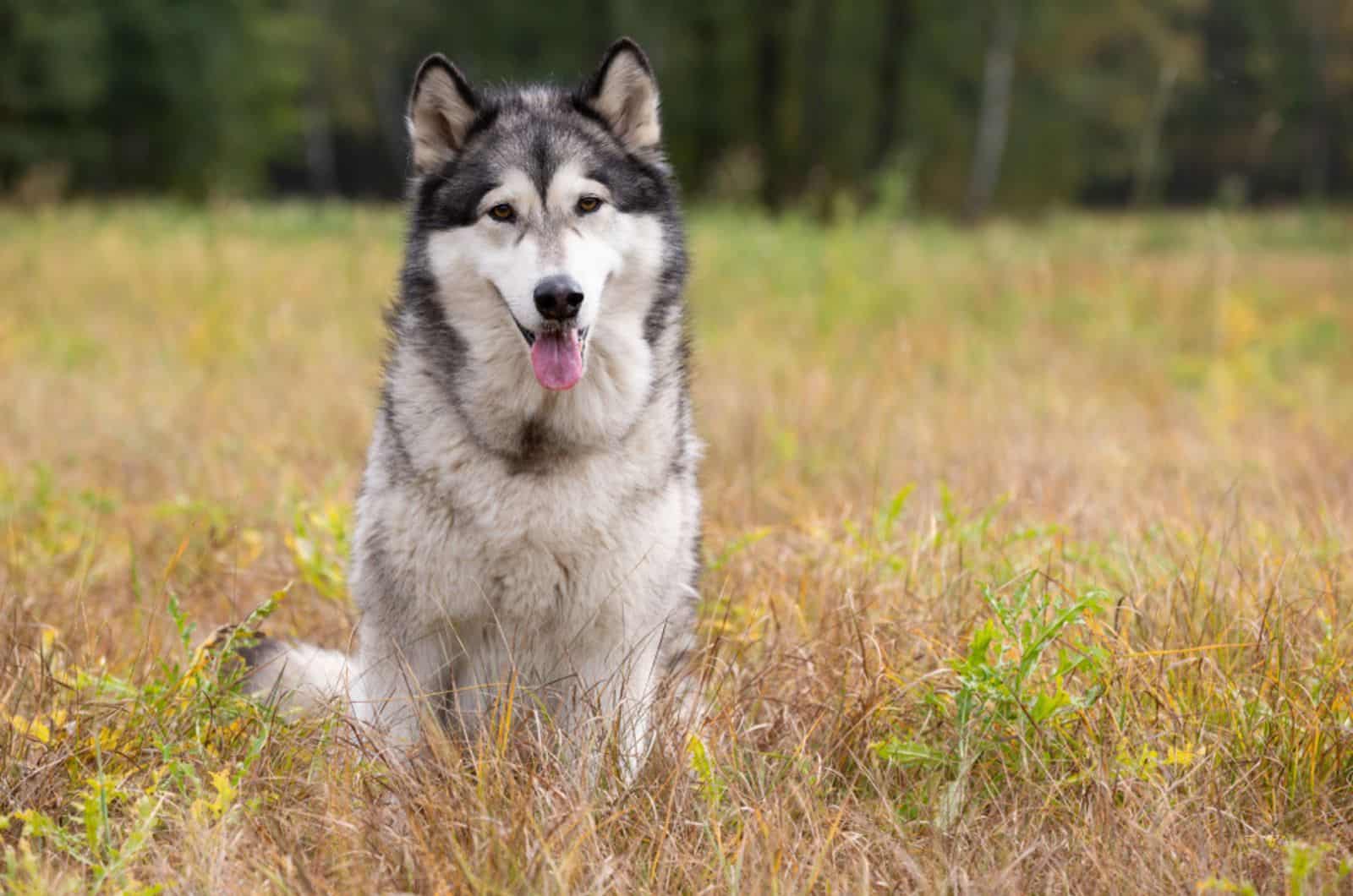
On the Malamute vs Husky vs Samoyed personality chart, we can see that Alaskan Malamutes are not as friendly as the other two dog breeds.
They definitely need proper and early socialization to learn that other dogs, especially small animals, are friends. This behavior is normal for Malamutes because they have a high prey drive.
So, if you plan on getting an Alaskan Malamute, but you already have other small pets, like cats or rabbits — it is best to ask your breeder if they have socialized the pups. If the answer is yes, then they can be just fine.
But, if the answer is no… you can have problems with Mals and small animals. Simply said… they will think that small animals are prey that needs to be caught.
Their more independent nature is also the reason why they are not as good with children as other dogs on the chart. They don’t have as much patience as Huskies or Samoyeds when it comes to playtime with children.
But, if they learn to play with children from when they were little pups, then there won’t be too many problems. Once again, that is early socialization, and it is very important for any dog breed.
Training An Alaskan Malamute
The Alaskan Malamute is the most trainable of the three dogs mentioned in the chart. They quickly learn, and they love to do something and please their owner.
They are excellent working dogs that quickly get the idea of what you are asking them. Whether it is to pull a sled or do a trick that you taught them to do — they will do it.
However, their prey drive can sometimes get in the way. If you are outside where they can see many small animals, then training might get interrupted… several times. So, the best place to train your Alaskan Malamute is somewhere where there are no distractions.
Can They Be Watchdogs?
An Alaskan Malamute can be a great watchdog. It is their aloofness and calmer nature that makes them great. Naturally reserved to strangers, Malamutes will definitely let you know if someone is approaching the premises — wherever you live.
An Alaskan Malamute can also be a good guard dog. This is because they are not as playful as Huskies and Samoyeds, and because they are larger than the two. This automatically puts them on the list of big guard dogs for one reason — no one wants to approach a large dog.
So, while they are not bred to be guard dogs or watchdogs, they can do both, especially with good training.
Health Issues
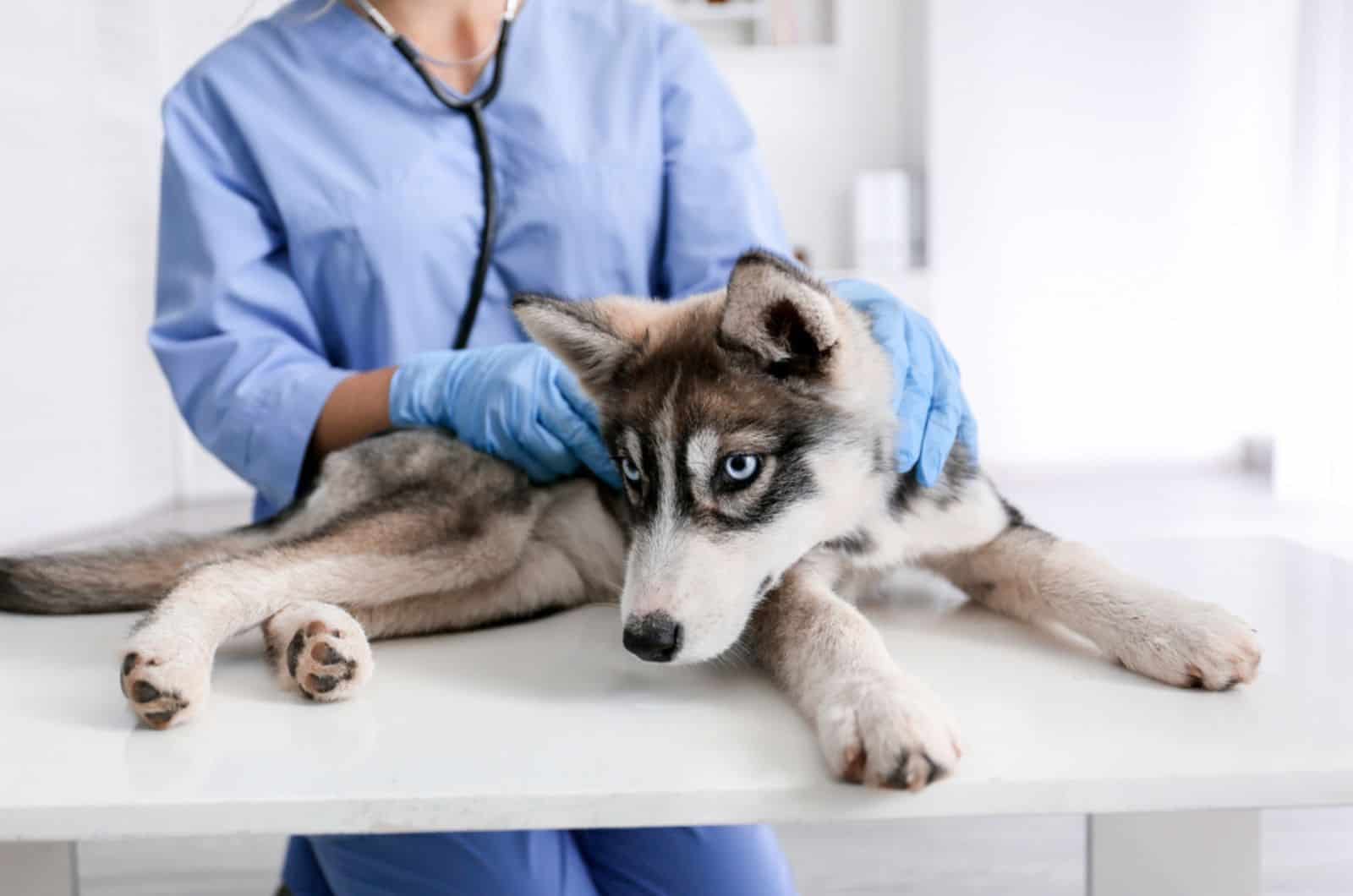
All three dogs are generally healthy dogs. They don’t have health issues like some other dogs have, for example, a Pug or a Bulldog. But, every dog can get sick or get some hereditary disease if its parents haven’t been tested.
That’s why it is important to get a Siberian Husky, Samoyed, or Alaskan Malamute from a responsible breeder who will test their breeding dogs for various health problems.
If the breeder finds out that one of the dogs or both dogs used in breeding have some kind of health issue that they can transfer to their offspring — they won’t breed the dogs.
You can always ask the breeder you are getting your puppy from about the health status of the puppy’s parents. Any responsible breeder will show you the health proof of their dogs. Such health proof is a paper on which you can see that the breeding pair has been cleared of hereditary diseases.
Samoyed
As mentioned, Samoyeds are generally healthy dogs. However, they could have dental problems more often than the other two dog breeds.
That’s why it is important to regularly brush your dog’s teeth by using a special dog toothbrush or a finger brush. The latter is more convenient because you can massage the gums at the same time.
Also, always use toothpaste made for dogs… not the one we use. If it’s possible, you should brush your dog’s teeth twice a day — once in the morning and once in the evening. But, once a day is alright if you cannot make it two times a day.
Besides teeth problems, there are other health issues that Samoyeds can be prone to:
- Hip dysplasia
- Eye Problems
- Heart Problems
Because of the possibility of these health issues affecting Samoyed dogs, the National Breed Club recommends the following tests to be made:
- Hip evaluation test
- Ophthalmologist evaluation
- Cardiac exam
- RD/OSD DNA Test
- PRA Optigen DNA Test
Siberian Husky
The Siberian Husky is also a healthy dog breed. They do have one thing that is more common in Huskies than in the other two dog breeds from the Malamute vs Husky vs Samoyed chart. This is an eye problem called juvenile cataracts.
A responsible breeder should take their Siberian Husky dog for an ophthalmologist exam when the dog turns one year old. After that, this eye exam should be repeated every year.
Juvenile Cataracts
A cataract is an eye problem that means the lens of the eye is no longer clear and transparent, but “clouded”. Simply put… it is an irregularity of the eye’s lens opacity. This irregularity can be more severe, and it can lead to complete blindness.
Juvenile Cataracts are developed before a puppy is born. This means it is a congenital disease that cannot be cured, but prevented by treating the mother or father of the puppy.
Because this disease develops in-utero, and we can’t know if the dog has it or not before its birth, scientists and vets are constantly creating new screenings and tests to help the breeders examine their dogs more precisely.
Recognizing cataracts and other health problems is extremely important for owners of working dogs. They should keep an eye on their dogs, and quickly act if they notice anything out of the ordinary.
Besides eye problems, a Siberian Husky can also have hip problems. The Siberian Husky Club of America recommends hip and ophthalmology evaluation to prevent these health issues.
Malamute
Just like Siberian Huskies and Samoyeds, the Alaskan Malamute is also a generally healthy dog breed. They can also have problems with their teeth so regular brushing is a must for Malamute dogs, too.
It’s the same routine — twice a day by using a toothbrush for dogs or a finger brush, with toothpaste for dogs. You can also help your Mal by giving it some dental chew toys. These toys are specifically made to help with the dental and overall oral health of the dogs.
Besides teeth, any owner of an Alaskan Malamute should check their ears regularly. These dogs are working dogs, and they love to be outside, which makes them prone to having problems with foreign objects stuck in their ear canals.
When you brush your dog’s teeth, or groom them, you can check their ears as well. There are also signs that your dog has some issues with its ears. For example, they can rub their face on the carpet or any other surface to relieve the itchiness or pain.
Hip Dysplasia
This is a health issue that can affect all three dog breeds from our chart. But, it is more common in Alaskan Malamutes because of their size. Mals are bigger than Huskies and Samoyeds, and as such, they are more prone to this joint malformation.
Hip dysplasia happens during the growth of the puppy. A hip is a joint that consists of two parts:
- Socket (in the pelvis)
- Ball (head of the femur bone)
They should fit in perfectly, allowing movement without restrictions or too much looseness. But, when the growth of the socket and ball doesn’t happen equally, the problem called hip dysplasia happens.
The outcome of this growth disparity is looseness of the hip joint resulting in pain and lameness. A dog will avoid using the affected leg, and if it is not treated, the pain can become quite unbearable.
Other Malamute Health Issues
Other than hip dysplasia, this dog breed can also suffer from elbow dysplasia. The reason is the same — irregularity during the growing stage, which leads to looseness of the elbow and consequential pain.
All dogs with joint problems will have a unique gait that tells us something is wrong. They will either limp, avoid using the affected leg/legs, or they might have a so-called bunny gait.
Other diseases Alaskan Malamutes can be prone to are:
- Hypothyroidism
- Thrombopathia
- Von Willebrand’s disease
- Day blindness
- Chondrodysplasia (or dwarfism)
- Inherited polyneuropathy
The National Breed Club (AKC) recommends the following tests to be done on Alaskan Malamutes in order to avoid health issues in their offspring:
- Hip evaluation
- Ophthalmologist evaluation
- Polyneuropathy DNA Test
Price Difference
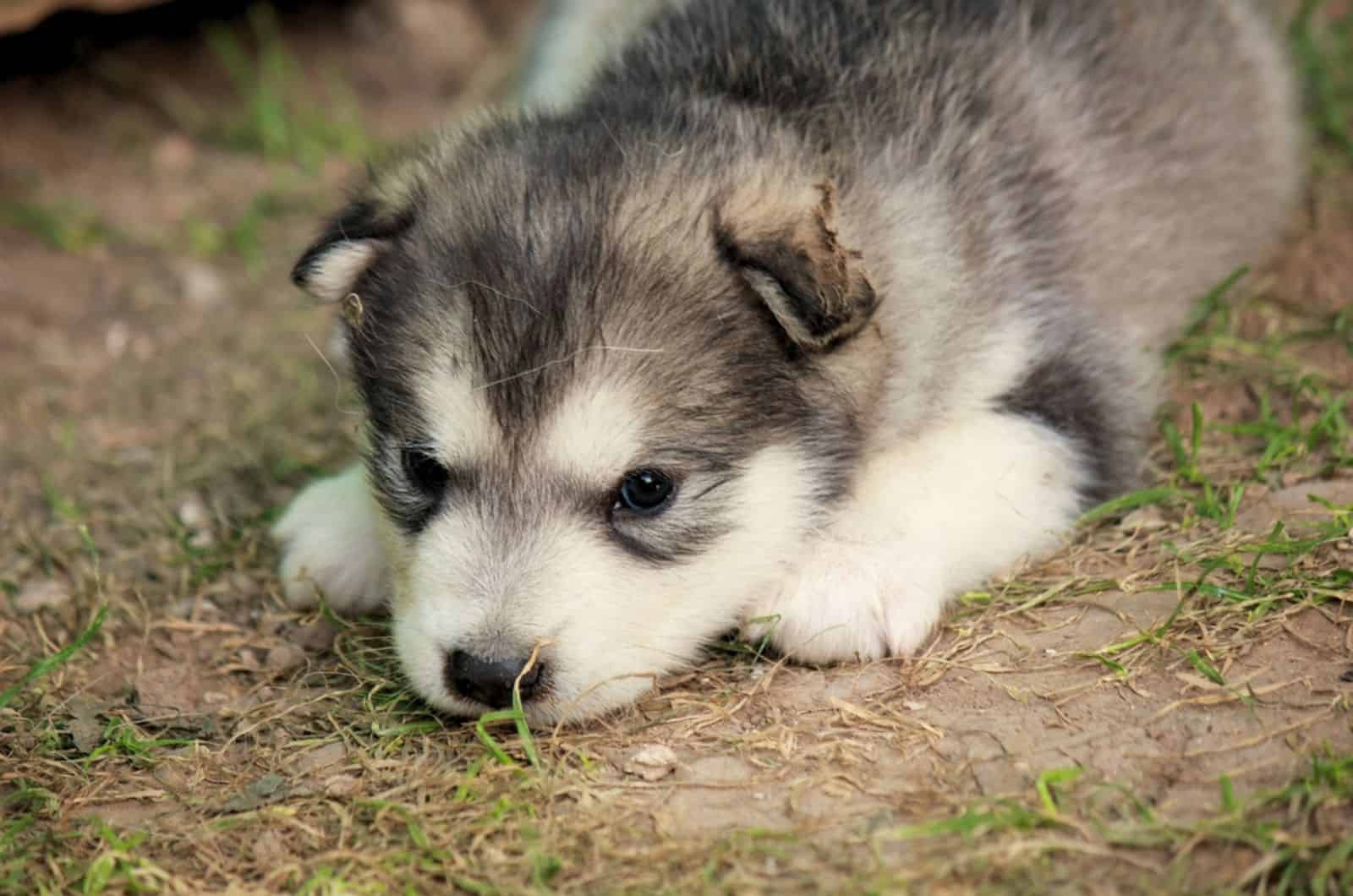
As with most other traits, there is a price difference between an Alaskan Malamute, a Siberian Husky, and a Samoyed dog. The most expensive of all three dog breeds is the Alaskan Malamute.
But, the two other dog breeds can get pricey as well. For example, The Samoyed dog can cost more than $1300! But, they can also be less than $600.
The Siberian Husky is the least expensive of all — their average price is from $400 to $1400. You can find Huskies for less than $400, but it’s usually from a breeder who doesn’t have the health tests or the proof that the Husky pup is actually a purebred Husky.
A lot of times, people mix the already-mentioned Alaskan Husky with the purebred Siberian Husky. You can always ask for the AKC registration papers of the puppy’s parents as proof that they are purebred dogs and that their offspring are purebred, too.
And, the Alaskan Malamute is the most expensive of all three — their average price is from $700 to $2300. Sometimes, the price is more than $2300 — up to $2500!
Why Are Malamutes That Expensive?
The reason why Alaskan Malamutes are much more expensive than the Siberian Husky or the Samoyed dog is the fact that they are much bigger than these two dog breeds.
If you think about it, it is not the same breeding a Chihuahua and a Malamute. The Alaskan Malamute will need more food, a bigger bed, bigger toys, and more room to play, and they will also have higher vet bills and more expensive grooming.
So, to actually make a profit, breeders sell Alaskan Malamute puppies for a higher price. The bigger the dog and the more expensive taking care of it gets — the higher the price.
Can I Adopt These Dogs?
If you find the price to be too much or you prefer adopting over buying, then there are places where you can look and try to find these dogs.
All three dog breeds are popular breeds in the States, especially in Alaska, where they use them as working dogs. You can look around and check the local shelters or ask a friend if they know someone who has a Husky, a Samoyed, or a Malamute puppy.
You can also check online places, such as:
You have to understand that in most cases, we don’t know the health history of the dog’s parents. They might have some hereditary diseases or they might not be 100% purebred Huskies, Malamutes, or Samoyed dogs.
But, if you don’t care about the dog’s bloodline or pedigree, and you want to save a little doggy soul and give it a proper life to live, then go for it — we applaud you, and wish you good luck in finding your new furry (double-coated) friend.
Average Lifespan
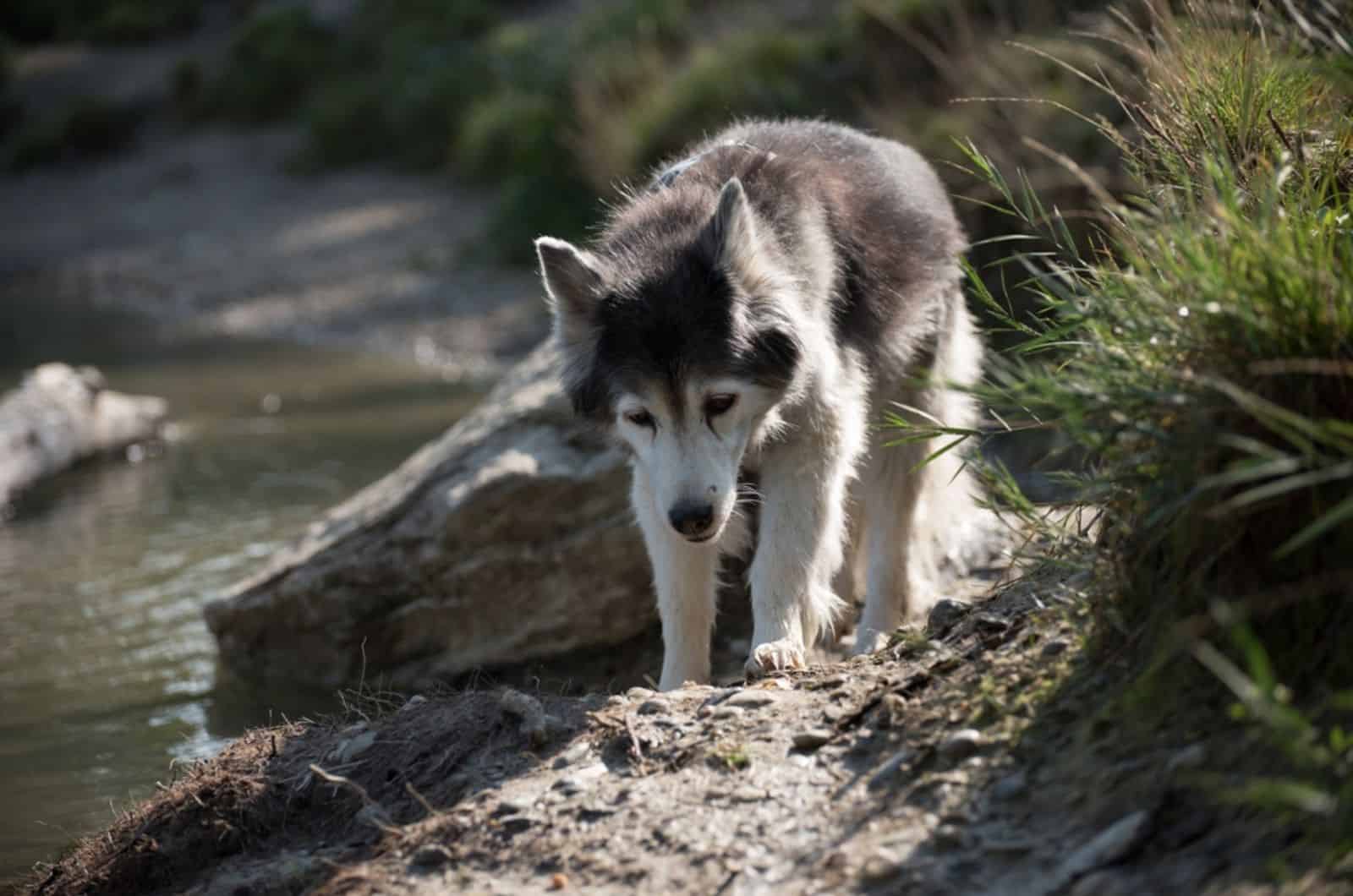
The average life expectancy of Samoyed dogs and Siberian Huskies are the same — from 12 to 14 years. However, the Alaskan Malamute has a shorter average lifespan — from 10 to 12 years.
A short lifespan follows big dogs. Most large dog breeds have a lifespan of up to 12 years, some even shorter, such as an Irish Wolfhound or a German Shepherd.
I am not saying 12 years is a lot, but it is the average life expectancy of most dog breeds. Dogs can, of course, live longer than that, but we have to make sure they have a comfortable and safe life.
They need to have regular vet checks, high-quality food, mental and physical stimulation, regular brushing and bathing, regular treatment against external and internal parasites, vaccinations, and lots of love and affection.
This is what our dogs need from us from the day we bring them home until the day it is time to let them go…
The Conclusion
We saw and we dissected the Malamute vs Husky vs Samoyed chart. We saw the differences and the similarities between these three dog breeds. Siberian Huskies and Samoyeds have a lot of similarities.
On the other hand, the Alaskan Malamute dog stands out. They are less friendly, less open to strangers, not as good with children and other dogs, and they cost more.
There are differences in their size. Once again, the Alaskan Malamute stands out — they are bigger than Samoyeds and Huskies.
But, when it comes to physical traits, Samoyeds are different from Huskies and Malamutes because they have fluffier fur, with long hair. The other two are much more similar, and people often confuse them, especially if the Mal happens to be smaller than the average.
The final thought on these three dog breeds is that it doesn’t matter which one you choose as long as you know what is expected of you.
You need to take care of your dog and love him for the rest of his doggy life. They are as cute as puppies, but these are large dogs that need space and lots of food. So, no matter whether you think they are gorgeous or adorable, they are not passing fun, and they will grow out of their puppy phase.
If you think their activity levels and playfulness or their size is not for you — you can check out these low-energy, medium-sized dogs: 17 low-energy dogs.
